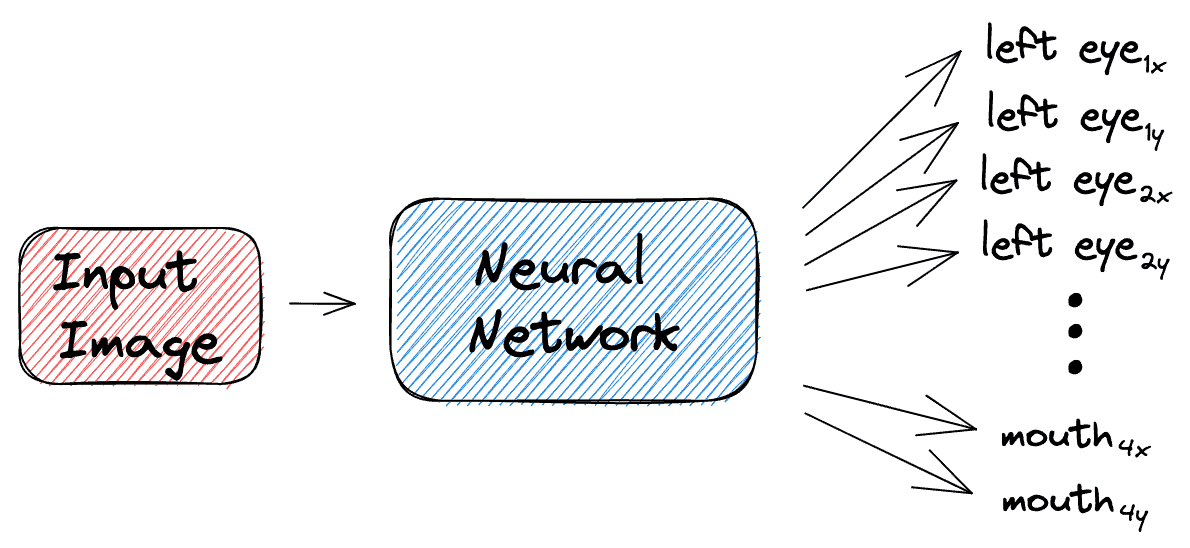Learn through the super-clean Baeldung Pro experience:
>> Membership and Baeldung Pro.
No ads, dark-mode and 6 months free of IntelliJ Idea Ultimate to start with.
Last updated: March 18, 2024
In this tutorial, we’ll make an introduction to the task of landmark detection. First, we’ll briefly define the term, and then we’ll describe how we can use machine learning to deal with the problem. Finally, we’ll present the most important applications and challenges of landmark detection.
Landmark detection is one of the most fundamental tasks in the field of computer vision. Given an input image , the goal is to detect the coordinates of specific useful points in the image. These important points are referred to as landmarks.
Usually, the input image depicts a facial image, and the landmarks we want to detect correspond to the eyes, nose, mouth, and jawline of the face. Below, we can see an example of a facial landmark detection system where the green points correspond to the detected landmarks. Each green point is represented by its coordinates in the image:

Now, let’s see how machine learning can be used to solve the landmark detection task.
First, we have to collect a large dataset of images that have already annotated landmarks. For example, if we want to perform facial landmark detection, we have to collect facial images that provide the coordinates of the position of the eyes, the nose, the mouth, etc.
Then, we have to train a neural network that will take the facial image as input and give the 2D coordinates of the landmarks as output. Since we have to do with images, Convolutional Neural Networks will be used that can effectively capture the visual features of an image. Below, we can see a diagram of how a neural network is used for facial landmark detection:

Landmark detection has progressed a lot in recent years, providing us with a lot of exciting applications. Let’s discuss some of them.
The most common application of landmark detection is in facial recognition by detecting facial landmarks in the region of the eyes, nose, and mouth. Specifically, to recognize an individual, we can focus on locating their facial landmarks and then comparing them with the saved identities in our database.
Landmark detection is also beneficial in medical imaging, where common tasks involve the identification of tumors or organs in medical images. These parts of the body can be considered landmarks, and implementing a model that detects them can aid in diagnosis and treatment planning.
The field of robotics leverages a lot of the capabilities of a landmark detection system to help a robot navigate and interact with its surroundings. In real-time conditions, a robotic device encounters a lot of information and, as a result, needs a landmark detection system in order to focus on the important parts of the environment, like tables, doors, etc.
Despite its success, the task of locating landmarks in an image presents many challenges, especially in real-time conditions.
The most important problem in this task is data annotation. Typically, to create a dataset for landmark detection, we have to specify every coordinate for every landmark that we want to detect.
So, for example, if we want to detect 32 facial landmarks, then we have to keep track of 32 2=64 values for each image in the dataset. This is a very difficult procedure that leads to a lot of errors in labeling and introducing noisy data. Also, large-scale datasets that are a necessity for modern neural networks are impossible to acquire.
Another challenge for landmark detection in the real environment is occlusions. This problem appears when another object in the image partially or completely obscures a landmark.
In this article, we presented the task of landmark detection. First, we discussed the definition of the task, and then we talked about using machine learning for landmark detection. Finally, we talked about some applications and challenges.